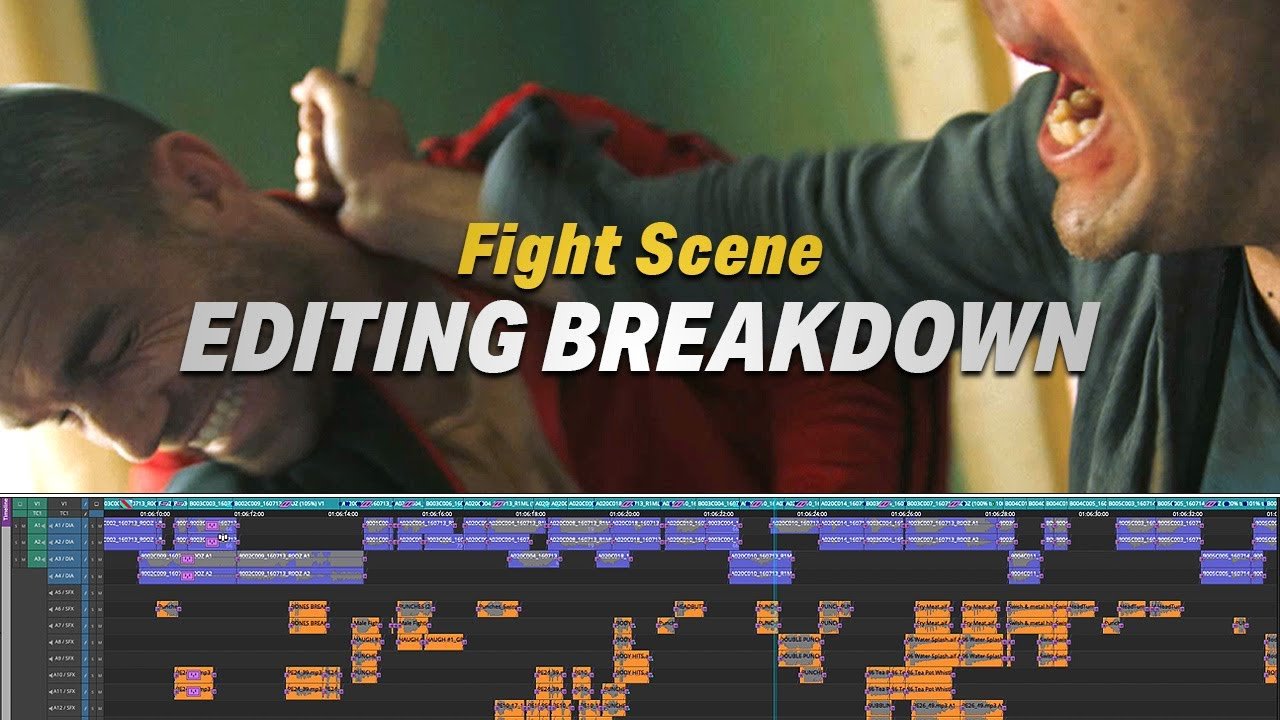Knowing how to edit a fight scene is an essential skill for any film or TV editor. Fight scenes can be some of the most thrilling—and demanding—sequences to edit. From pacing to clarity to emotional tone, there’s a lot going on beneath the surface. In this video, I walk through my approach to cutting action, using footage from a short film I worked on to illustrate how I handle timing, rhythm, and viewer orientation in a fight scene.
Whether you’re working on a short film, TV show, or just want to level up your editing skills, this breakdown will give you real-world insights into how to cut clean, clear, impactful action.
As editors, we’re often told to “make it feel fast,” but that doesn’t mean cutting wildly. A good action sequence tells a story, reveals character, and respects geography. Editing fight scenes is a unique challenge because it forces you to balance clarity with adrenaline. Cut too much, and you lose the viewer. Cut too little, and it feels slow. I created this video to show how I think through that balance and how I approach scenes that demand both tension and precision.
My Approach: How to Edit a Fight Scene Step-by-Step
What You’ll Learn in This Video
✅ How to keep action scenes visually clear without sacrificing energy
✅ The importance of cutting on movement for fluidity
✅ When to hold on a shot vs. when to cut quickly
✅ How to match impact points between shots
✅ Tips for using reaction shots to sell emotion and power
✅ The difference between editing choreography and storytelling
My Thought Process When Editing Action
Every fight scene has a rhythm, and it’s the editor’s job to find it. That means listening closely to sound cues, matching visual energy, and making sure the audience always knows what’s happening — even when punches are flying. I structure scenes with clarity in mind, but always aim to build tension with each successive cut.
In this particular short film, I had to work with a mix of wide shots and handheld close-ups. One of the key challenges was making sure that the energy of the choreography wasn’t lost while still making the action readable. I relied heavily on audio hits to punch up the physicality and used reaction shots to heighten emotional stakes. The pacing wasn’t just about speed — it was about timing.
No two fight scenes are the same. Some are gritty and raw, others are stylized and fast-paced. My approach always adapts based on the tone of the project, the director’s vision, and the performances on screen. But the core principles — clarity, rhythm, impact — stay the same.
Pro Tips for How to Edit a Fight Scene
- Don’t rush the cut — let the action breathe when needed.
- Keep geography consistent — avoid confusing angles.
- Use audio hits to punch up physical impact.
- Cut on movement — it hides edits and keeps flow natural.
- Use inserts or close-ups to reset the audience’s position in space.
Great action editing isn’t just fast — it’s deliberate. It’s all about making the viewer feel the moment without losing their place.
Frequently Asked Questions
How do you edit a fight scene?
Editing a fight scene requires careful attention to timing, movement, and clarity. You want each strike and reaction to feel intentional and fluid. Cut on action, use reaction shots, and emphasize rhythm to keep the energy high and the scene readable.
What makes a good fight scene edit?
A great fight scene edit balances fast-paced cutting with clear spatial orientation. It should heighten tension without confusing the viewer. Great sound design, strategic shot selection, and pacing all contribute to a compelling edit. Knowing how to edit a fight scene isn’t just about cutting fast — it’s about storytelling, rhythm, and emotion.
Related Resources
Want to dive deeper into editing for film & television? Check out these resources:
🎧 Hollywood Editing Mentor Podcast
📚 Free Guide: How to Break Into Scripted
If you found this helpful, leave a comment on the video or share it with an editor friend. And don’t forget to subscribe on YouTube for more industry tips and career advice.





0 Comments